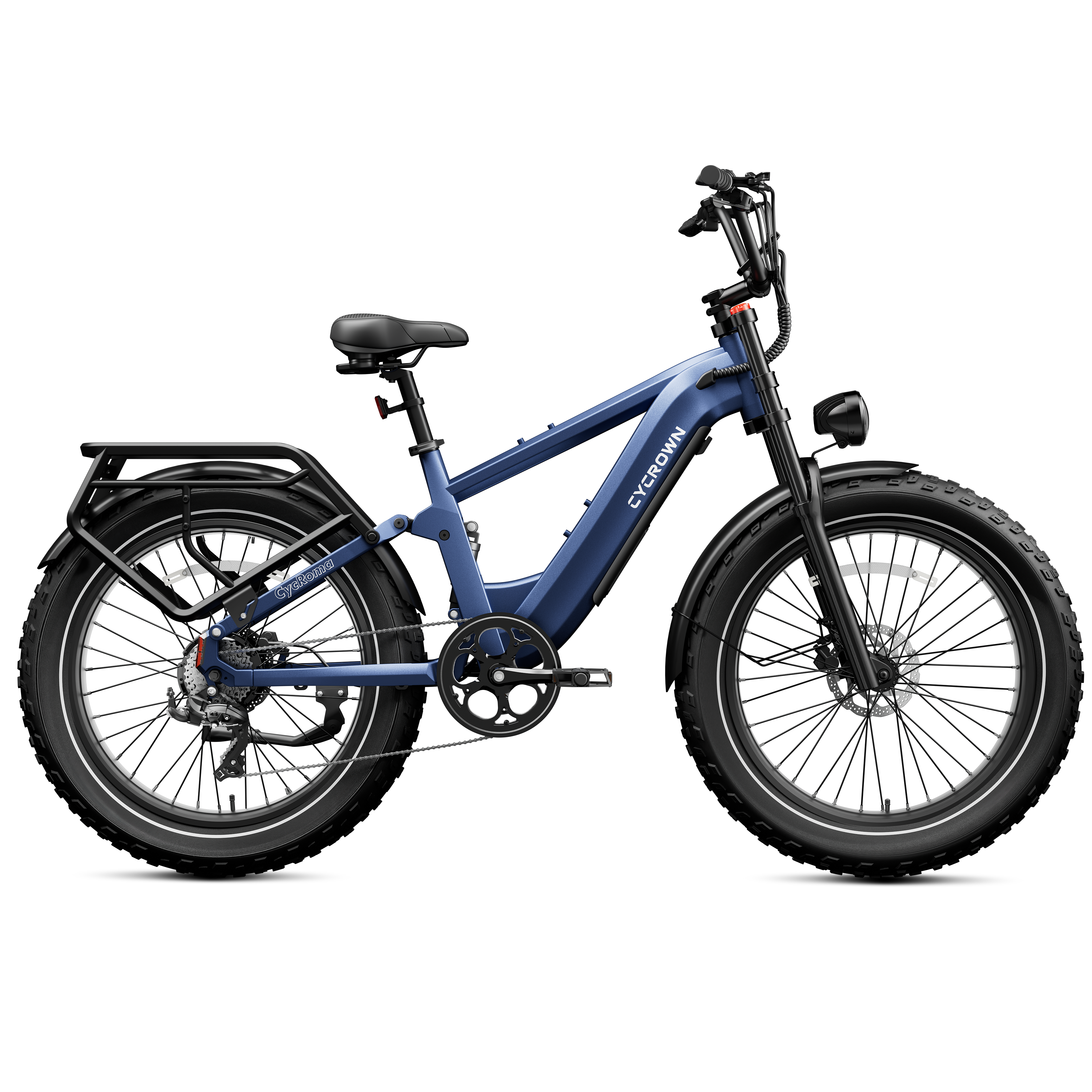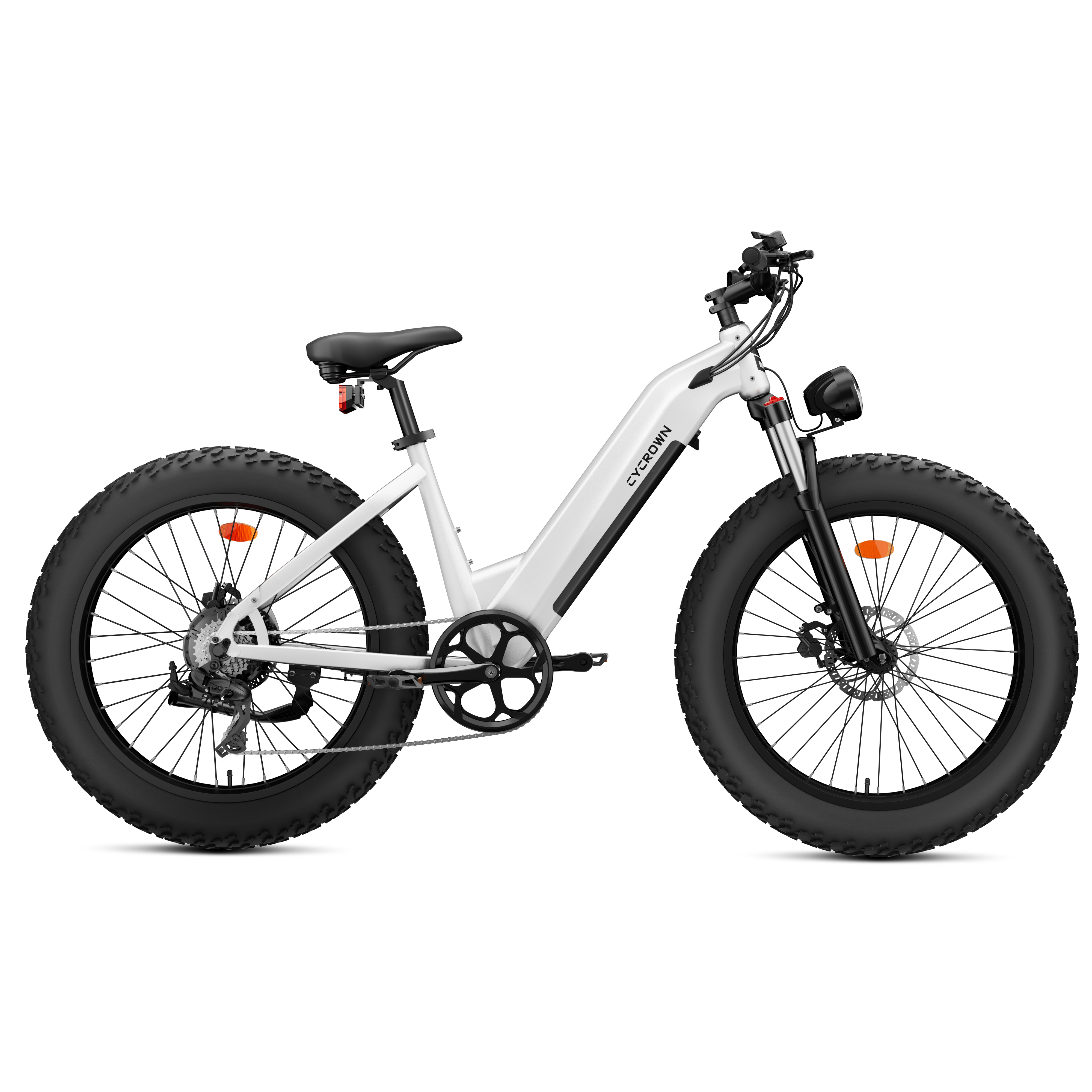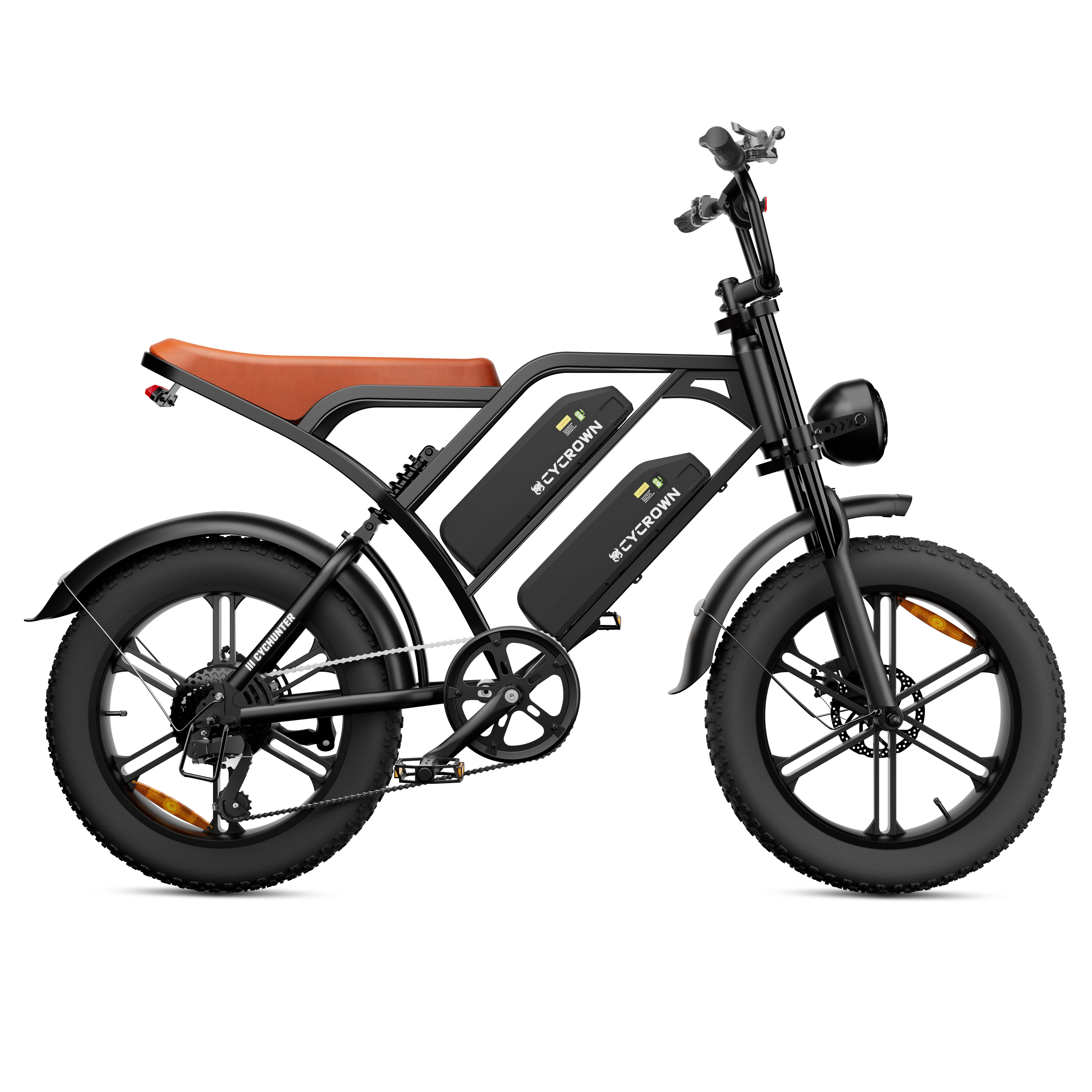Bike geometry is a critical factor in how a bike handles and feels, yet it's often overlooked by riders when selecting their perfect cycle.
This bike geometry comparison guide will illuminate the subtle yet significant differences in bike geometry, helping you understand how each aspect influences your riding experience.
From the angle of the fork to the length of the top tube, every measurement plays a distinct role. read to explore the aspects of bike geometry with us and discover how to choose a bike that truly fits your style.
Fundamentals of Bike Geometry
When it comes to bike geometry, there are a few key measurements that you need to understand in order to compare different bikes. These measurements can help you determine how a bike will handle and how comfortable it will be to ride.
Understanding Stack and Reach
Stack and reach are two measurements that are becoming increasingly important in the world of bike geometry. Stack refers to the vertical distance between the bottom bracket and the top of the head tube, while reach refers to the horizontal distance between the bottom bracket and the center of the head tube.
Stack and reach can be used to compare different bikes and determine which one will be the best fit for you. For example, if you have a long torso and short arms, you may need a bike with a higher stack and shorter reach. On the other hand, if you have a short torso and long arms, you may need a bike with a lower stack and longer reach.
Significance of Head Tube Angle
The head tube angle is another important measurement in bike geometry. This measurement refers to the angle between the head tube and the ground. A steeper head tube angle will result in quicker handling and a more responsive ride, while a shallower head tube angle will result in more stable handling and a smoother ride.
The head tube angle is often used in conjunction with other measurements, such as fork rake and trail, to determine how a bike will handle. A bike with a steeper head tube angle and less fork rake will have quicker handling, while a bike with a shallower head tube angle and more fork rake will have more stable handling.
The Role of Seat Tube Length
The seat tube length is another important measurement when it comes to bike geometry. This measurement refers to the length of the seat tube, which is the part of the frame that the seat post slides into. The seat tube length can be used to determine how high or low the saddle will be in relation to the pedals.
The seat tube length can also affect the overall fit of the bike. A bike with a shorter seat tube length will have a more aggressive riding position, while a bike with a longer seat tube length will have a more upright riding position.
Bike Geometry Comparison of Different Bike Types
When comparing different bike types, it's important to consider the geometry of each bike. The geometry of a bike affects its handling, comfort, and overall performance. In this section, we'll compare the geometry of mountain bikes, road bikes, and hybrid bikes.
Mountain Bikes Geometry
Mountain bikes are designed for off-road terrain and typically have suspension travel to absorb shocks and bumps. The geometry of a mountain bike is designed to provide stability and control on rough terrain. Mountain bikes have a slack head tube angle and a longer wheelbase, which provides stability at high speeds and on steep descents. The suspension travel on a mountain bike can vary from 80mm to 200mm, depending on the type of riding you plan to do.
Road Bikes Geometry
Road bikes are designed for speed and efficiency on paved roads. The geometry of a road bike is designed to provide an aerodynamic riding position and efficient power transfer. Road bikes have a steeper head tube angle and a shorter wheelbase, which provides quick handling and responsiveness. The wheel size on a road bike is typically 700c, which is larger than the wheel size on a mountain bike.
Hybrid Bikes Geometry
Hybrid bikes are designed for a mix of on-road and off-road riding. The geometry of a hybrid bike is a combination of a mountain bike and a road bike. Hybrid bikes have a more upright riding position than a road bike, which provides comfort and visibility in traffic. The wheel size on a hybrid bike can vary, but is typically larger than the wheel size on a road bike.
Geometry and Bike Fit
When comparing bike geometry, bike fit is a crucial factor to consider. A bike that fits you well will not only be more comfortable to ride, but also more efficient and easier to handle. In this section, we'll discuss the impact of top tube length and adjusting stem length for comfort.
The Impact of Top Tube Length
The effective top tube length is the horizontal distance between the center of the head tube and the center of the seat tube. This measurement affects how stretched out you are on the bike and can have a significant impact on your comfort and performance. A shorter top tube will result in a more upright riding position, while a longer top tube will put you in a more aerodynamic position.
When comparing bike geometry, pay attention to the effective top tube length and consider your own body proportions. A bike with a shorter top tube may be a better fit for someone with a shorter torso, while a bike with a longer top tube may be better for someone with a longer torso.
Adjusting Stem Length for Comfort
Stem length is another important factor to consider when it comes to bike fit. The stem connects the handlebars to the steerer tube of the fork and can be adjusted to fine-tune your riding position. A shorter stem will result in a more upright position, while a longer stem will put you in a more stretched out position.
When comparing bike geometry, pay attention to the stem length and consider whether it can be adjusted to achieve a comfortable riding position. A bike with a longer top tube may require a shorter stem to achieve a comfortable position, while a bike with a shorter top tube may require a longer stem.
Advanced Geometry Measurements
When it comes to analyzing bike geometry, there are several advanced measurements that you should consider. In this section, we will delve into two of the most important measurements: Bottom Bracket Dimensions and Fork Rake and Trail.
Analyzing Bottom Bracket Dimensions
The Bottom Bracket (BB) is the part of the frame where the pedals attach. The height of the BB affects the bike's stability, while the drop of the BB affects the bike's cornering ability. The front center, which is the distance between the bottom bracket and the front axle, also plays a role in the bike's handling.
When comparing bikes, it's important to look at the BB height and drop. A higher BB height can provide more clearance for obstacles, but can also make the bike feel less stable. A lower BB height can make the bike feel more stable, but can also increase the chances of hitting obstacles. Similarly, a higher BB drop can provide better cornering ability, but can also make the bike feel less stable. A lower BB drop can make the bike feel more stable, but can also reduce cornering ability.
Fork Rake and Trail Explained
Fork rake and trail are two measurements that affect the bike's steering. Fork rake is the distance between the steering axis and the center of the front wheel. Trail is the distance between the steering axis and where the front wheel touches the ground.
When comparing bikes, it's important to look at the fork rake and trail. A larger fork rake can make the bike feel more stable, but can also make it harder to turn. A smaller fork rake can make the bike feel less stable, but can also make it easier to turn. Similarly, a larger trail can make the bike feel more stable, but can also make it harder to turn. A smaller trail can make the bike feel less stable, but can also make it easier to turn.
Geometry Data and Tools
Utilizing a Geometry Calculator
When comparing bike geometry, it is essential to have accurate data and tools to analyze it. A geometry calculator is a useful tool that can help you compare different bike models and their geometry parameters side-by-side. With a geometry calculator, you can easily input the data and compare the geometry criteria of different bikes.
These calculators are available both on desktop and mobile devices, making it easy to access and use them on the go. They are also user-friendly, with clear instructions on how to use them, and they provide accurate data that you can rely on.
Building a Geometry Database
Another useful tool for comparing bike geometry is a geometry database. A geometry database is a collection of data that contains the geometry parameters of different bike models. By building a geometry database, you can easily compare the geometry parameters of different bikes and make an informed decision when choosing a bike.
To build a geometry database, you can use data from manufacturers, distributors, and other sources. You can also use online tools like Bike Insights, Geometry Geeks, and Forma, which provide open geometry databases that you can use to compare different bike models.
When building a geometry database, make sure the data you collect is accurate and up-to-date. You can use tools like bike-stats to compare the data you have collected and ensure that it is accurate.
Conclusion on Bike Geometry Comparison
Understanding bike geometry is the key to unlocking a ride that's tailored to your body and your cycling ambitions. Now that you're familiar with the impact of each geometric measurement, choosing your next bike becomes a decision informed by knowledge, not just aesthetics or assumption.
Ready to put this knowledge into practice? Explore our electric bicycle collection where each model's geometry is designed to ensure you get the most out of every pedal. Step into the future of cycling with a bike that's as comfortable as it is capable, and as suited to your riding style as it is to your sense of adventure. Your perfect ride awaits at Cycrown!
Frequently Asked Questions on Bike Geometry Comparison
What difference does bike geometry make?
Bike geometry plays a crucial role in determining how a bike handles and feels while riding. The geometry affects the bike's stability, responsiveness, and comfort. The angle of the head tube, the length of the top tube, and the height of the bottom bracket all contribute to the bike's overall geometry.
Are gravel bikes more upright?
Gravel bikes can have a more upright riding position than road bikes, but this is not always the case. The geometry of a gravel bike can vary depending on the manufacturer and the intended use of the bike. Some gravel bikes have a more relaxed geometry, which allows for a more upright riding position, while others have a more aggressive geometry for a more race-oriented riding position.
Are heavier bikes better downhill?
The weight of a bike can affect its downhill performance, but it is not the only factor. A heavier bike can provide more stability and momentum on downhill sections, but it can also make the bike slower to accelerate and more difficult to maneuver. The rider's skill level and the bike's geometry also play a significant role in downhill performance.
How much does bike geometry matter?
Bike geometry matters a great deal when it comes to the bike's overall performance and ride quality. The right geometry can make a bike feel more comfortable, stable, and responsive, while the wrong geometry can make a bike feel uncomfortable, unstable, and unresponsive.
Is stack or reach more important?
Both stack and reach are important measurements when it comes to bike fit and comfort. The stack measurement refers to the vertical distance between the bottom bracket and the top of the head tube, while the reach measurement refers to the horizontal distance between the bottom bracket and the center of the head tube. The ideal stack and reach measurements depend on the rider's body type and riding style.
What is the difference between relaxed and aggressive bike geometry?
Relaxed bike geometry is characterized by a longer wheelbase, a slacker head tube angle, and a shorter top tube. This type of geometry provides a more comfortable and stable ride, making it ideal for long-distance touring or casual riding.
Aggressive bike geometry, on the other hand, is characterized by a shorter wheelbase, a steeper head tube angle, and a longer top tube. This type of geometry provides a more responsive and nimble ride, making it ideal for racing or aggressive riding.
How does bike geometry affect handling?
Bike geometry dictates handling with head tube angle affecting steering responsiveness and stability, wheelbase length impacting overall steadiness and agility, chainstay length influencing acceleration and climbing, bottom bracket height altering stability and ground clearance, and seat tube angle determining pedaling efficiency and rider positioning.










